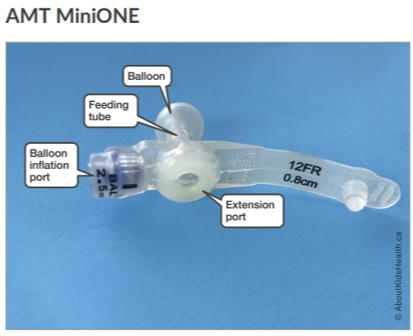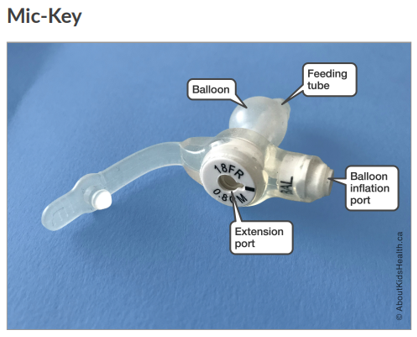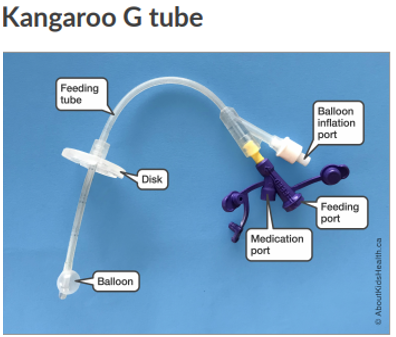HINT: How do I check to see if a G-tube balloon is broken or blocked?
Connected Care Quick Hits are up to date and evidence based recommendations for the care of children with medical complexity & technology dependence, from hospital to home.
HINT: How do I check to see if a G-tube balloon is broken or blocked?
SITUATION:
This week’s QuickHit! comes from an Enteral Feeding module that Connected Care provided for home care nurses. During the module, several home care nurses asked about when and how to do routine safety checks of a child's G-tube balloon.
BACKGROUND:
Gastrostomy tubes (G-tubes) are feeding devices that provide liquid nutrition, medication and other fluids directly into the stomach. There are many types of G-tubes, some are placed in Image Guided Therapy (IGT) and some are placed by General Surgeons. Most, but not all, have a balloon on the end of the G-tube, located inside the stomach, which when inflated with sterile or distilled water acts to keep the tube in place and prevent it from falling out or accidently becoming dislodged.
Any kind of indwelling medical device has the potential to break or degrade with use and over time. G-tube safety checks at home are one way to help ensure that a child's G-tube balloon is still intact and functioning well, long after the feeding tube has been placed in the hospital.



ASSESSMENT:
When doing G-tube safety checks it helps to know and assess:
who* placed the tube and when* it was placed
what type, brand & size of tube is in now place
how much water has been used or recommended
* G-tubes placed by Image Guided Therapy (IGT) start out without balloons and are only changed to balloon type G-tube after at least 3 months. General Surgery placed tubes may have balloons but they are NOT to be checked before 8 weeks and after that, always defer to instructions for care and maintenance of the tube provided directly from the General Surgery team.
RECOMMENDATION:
Connected Care teaches families and home care nurses that it is important to check the amount of water in a balloon type G-tube at least once a week. Many families tell us that they do this routinely on Sundays.
To check the balloon, use a slip-tip syringe:
Insert an empty syringe into the balloon port, marked “BAL”.
Remove all the water from the balloon. Assess what was removed. It is normal for the water to become discoloured (brown or yellow).
Throw away the old water.
Re-inflate the balloon with new sterile or distilled water. Never use saline or air
In general, to prevent the balloon from leaking or breaking which can cause dislodgement, it is recommended that Balloon G-tubes be changed at least every six to eight months
TROUBLE SHOOTING IF THERE IS LESS WATER THAN PUT INTO THE BALLOON
It is normal for less water to be removed from the balloon than what was originally put in due to evaporation. This difference can be up to 0.5mL over a period of a week.
If > 0.5 ml difference, the balloon may be damaged, and the tube may need to be replaced. If so, re-inflate the balloon with the amount of water normally used and check again in 3-4 hours:
If the volume of water retrieved is the same, the water may have simply evaporated quicker than usual. Re-inflate the balloon with the amount of water you normally put in and check the balloon volume every three to four days to be sure there are no further problems.
If the volume retrieved is less the second time, the balloon is likely damaged, and the tube will need to be replaced.
If the volume retrieved is more than what you originally put in the balloon, and it looks like stomach contents or food, this means the balloon is broken and the tube will need to be replaced
IF THE BALLOON IS BROKEN
The G-tube is at risk of being accidentally pulled out or dislodged and needs to be securely taped down (see pic below).
There is usually no need to go to the emergency department and the child can be safely fed until arrangements are made to change the tube.
Many, but not all parents and their home care nurses know how to change their child’s balloon type tubes.

















